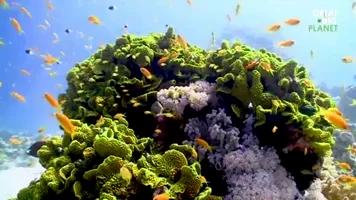URI
scientist awarded $1.7 million grant to study how corals grow and function
 University of Rhode Island coral
biologist Hollie Putnam is teaming with experts in computer science,
nanotoxicology, structural engineering and systems biology to study the
intricacies of how corals grow and function in an effort to find new ways to
help coral reef systems survive the damage being caused to them by the changing
climate and other environmental stressors.
University of Rhode Island coral
biologist Hollie Putnam is teaming with experts in computer science,
nanotoxicology, structural engineering and systems biology to study the
intricacies of how corals grow and function in an effort to find new ways to
help coral reef systems survive the damage being caused to them by the changing
climate and other environmental stressors.
The research team – which includes
Judith Klein-Seetharaman at the Colorado School of Mines, Lenore Cowen at Tufts
University, Jinkyu Yang at the University of Washington and Nastassja Lewinski
at Virginia Commonwealth University – has been awarded a two-year $1.7 million
grant by the National Science Foundation to decipher the reasons why certain
environmental conditions damage corals and to find ways to repair them.
“The complexity of corals makes conserving and restoring reefs very challenging,” said Putnam, URI assistant professor of biological sciences, who studies coral symbiosis and physiology.
“Corals are made up of many different organisms, including the animal host and the algae, bacteria, viruses and fungi that co-exist with it. They’re more like cities than individual animals, as they provide factories, housing, restaurants, nurseries and more for an entire ecosystem. Everything found on a reef is there because corals build the reef structure.”
The project will focus on three key
coral capabilities: they create calcium carbonate skeletons that provide
three-dimensional structures in which diverse sea life can live; they can heal
damage and regenerate their tissues; and they live in symbiosis with other
organisms. The ultimate aim of the study is to understand these processes well
enough to control them in the lab.
“We’re digging into these three
areas to understand coral biology better and looking at all the data to see who
the key players are,” Putnam said. “And we’ll be building a model system of
coral – a synthetic coral – to test and understand how corals work.”
According to Putnam, a massive
amount of data is now available about corals, fisheries, oceanography, climate,
coral bleaching, molecular biology and genomics that will be synthesized by the
researchers in new ways to address the challenges facing corals.
“We’re at a tipping point,” she
said. “We have data that will lead us to a better understanding of the coral
ecosystem, but we need to harness these data in a different way. And we’re at a
time of urgency because of the state that our corals are in.”
The scientists will analyze the
available data to identify the critical molecules involved in building reef
structures, wound healing and symbiosis, and they will test their interactions
in natural and 3D-printed models of synthetic corals. Then they will disrupt
the model system and examine the resulting interactions to better understand
the relationships at a molecular and organism level.
“Our goal after two years is to have
a better resource platform for all the data – from oceanographic to cellular.
We’ll have cell cultures and coral polyps, biological models and protocols and
other tools for future studies. And we’ll understand what it is about the coral
symbiosis that facilitates these symbiotic relationships,” said Putnam.
Ultimately, the researchers will end
up with the data that will help natural resource managers and conservationists
protect coral reefs from a variety of harmful human impacts.
“We could end up with conservation
or restoration recommendations for how corals are grown or the properties they
need to settle new coral recruits on,” Putnam added. “Primarily, though, we’ll
end up with an improved data aggregation platform and a greatly improved
understanding of coral biology and the tools we need to understand the system
and apply science-based solutions.”
Included in the grant funding will
be resources to hire graduate students and postdoctoral researchers, who will
rotate among the labs at each participating institution. The research team will
also provide educational outreach to the public at aquariums, schools and other
venues.